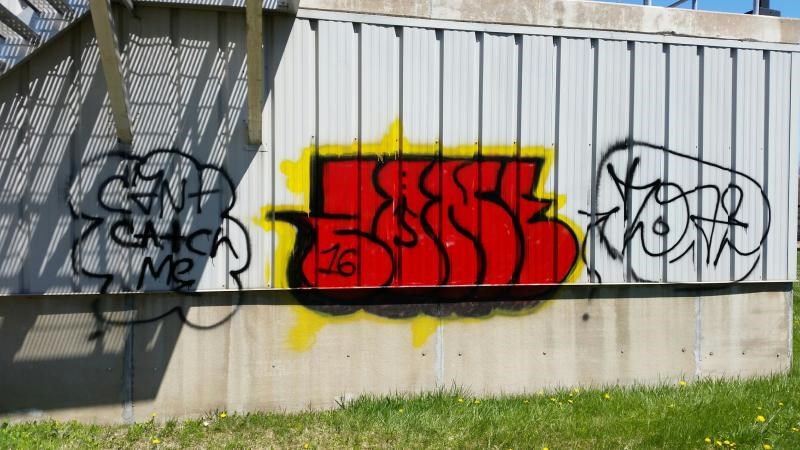A public arts policy being developed by Greater Sudbury includes plans to create legal graffiti walls, something other cities have tried successfully.
Members of the city's finance committee got a look this week at elements of the policy, which should be ready by September for a decision by the newly elected city council.
Among the proposals is creating a wall available for aspiring artists to paint graffiti to their heart's content. The wall would be repainted periodically so new graffiti could go up.
“Legal graffiti walls are increasing in popularity across the province as graffiti abatement programs (e.g. Ottawa, Gatineau, Toronto),” the staff report on the idea says. “Municipalities approach legal graffiti walls in several ways. One way is to specifically identify which walls are legal and to set standards regarding the maintenance of these walls (e.g. walls will be painted four times a year).
“Another way to regulate graffiti is to legalize it after it is installed. For example, the building owner would present graffiti to an advisory panel to officially recognize and legalize the art.”
That would require an amendment to the city's current property standards bylaw, which requires graffiti is to be removed within a number of days of receiving a notice.
“The public art policy could introduce the idea of legal graffiti walls, given that the city could permit it under specific circumstances by amending its property standards bylaw, accompanied with specific departmental programming elements,” the report said.
Ward 12 Coun. Joscelyne Landry-Altmann said there is already a graffiti wall in her ward, and it has been a success.
“I think the legal graffiti walls will be a great asset,” she said.
Beyond the wall, the policy would also set out procedures for hiring an artist to do public art, which would be incorporated into new buildings, additions to existing ones, major renovations and infrastructure work.
An advisory panel would be struck that would evaluate which artist to hire, based on past work, vision, qualifications and ability to work with a design team.
“Municipalities such as Calgary require the artist, once selected, to engage with the community, and undertake public consultation, in the development of site-specific artwork,” the report said. “Greater Sudbury should also employ this method when appropriate.”
The report recommends establishing a $150,000 fund for public art. Once a draft policy has been prepared, it would go out for public consultations.
“Staff proposes an online and paper format consultation strategy ... coupled with focused one-on-one stakeholder consultation with local artists and community groups interested in public art,” the report said.
